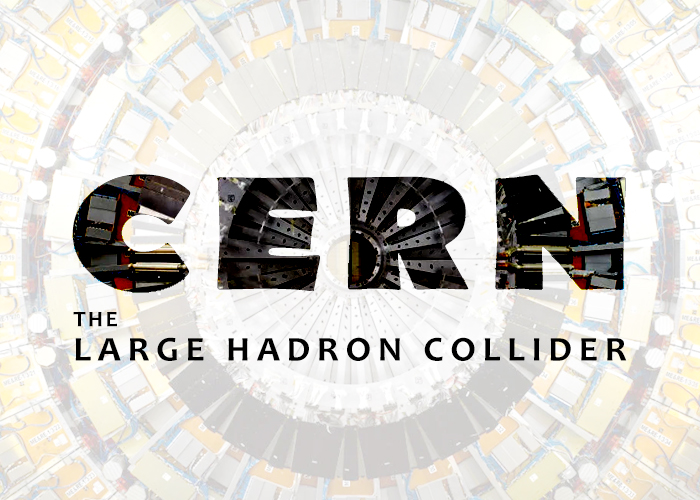The European Organization for Nuclear Research, known as CERN, is one of the most fascinating and mysterious scientific institutions in the world. Located near Geneva, Switzerland, CERN is home to the Large Hadron Collider (LHC), the most powerful particle accelerator ever built. While CERN’s work has led to groundbreaking discoveries, such as the Higgs boson particle, it has also sparked fears and conspiracy theories. Some people believe that CERN’s experiments could open portals to other dimensions, create black holes, or even lead to the end of the world. In this article, we will explore the history of CERN, the purpose of the Large Hadron Collider, the science behind it, and the myths surrounding it. We will also address the concerns and explain why most scientists believe these fears are unfounded. To make it easy to understand, we will use simple language and include summaries, timelines, and questions and answers.
What is CERN?

CERN, which stands for the European Organization for Nuclear Research, was founded in 1954. Its main goal is to study the fundamental building blocks of the universe. Scientists at CERN use powerful machines, like the Large Hadron Collider, to smash particles together at incredibly high speeds. By studying these collisions, they hope to learn more about the laws of physics and the origins of the universe.
CERN is a collaboration of 23 member countries, with scientists from over 100 nations working together. It is a place where some of the brightest minds in physics come to push the boundaries of human knowledge.
What is the Large Hadron Collider (LHC)?

The Large Hadron Collider is the world’s largest and most powerful particle accelerator. It is a massive underground ring, 27 kilometers (17 miles) in circumference, located beneath the border of Switzerland and France. The LHC was built to accelerate particles, like protons, to nearly the speed of light and then smash them together. These collisions create conditions similar to those just after the Big Bang, allowing scientists to study the fundamental forces and particles that make up the universe.
The LHC was officially launched on September 10, 2008, after decades of planning and construction. It has since become one of the most important tools in modern physics.
Key Discoveries at CERN
CERN and the LHC have made several groundbreaking discoveries. The most famous of these is the discovery of the Higgs boson particle in 2012. The Higgs boson, often called the “God particle,” is a fundamental piece of the puzzle that explains how particles acquire mass. This discovery was a major milestone in physics and earned François Englert and Peter Higgs the Nobel Prize in Physics in 2013.
Other important discoveries at CERN include the study of antimatter, the exploration of quark-gluon plasma (a state of matter that existed just after the Big Bang), and the search for dark matter and dark energy.
The Myths and Conspiracy Theories
Despite its scientific achievements, CERN has become the subject of numerous myths and conspiracy theories. Some of the most common fears include:
- Opening Portals to Other Dimensions: Some people believe that the high-energy collisions in the LHC could open portals to other dimensions or parallel universes. This idea is often linked to science fiction and has no basis in scientific evidence.
- Creating Black Holes: There are fears that the LHC could create tiny black holes that might grow and swallow the Earth. While the LHC can theoretically create microscopic black holes, they would be so small and unstable that they would disappear almost instantly.
- End of the World Scenarios: Some conspiracy theorists claim that CERN’s experiments could trigger catastrophic events, such as the destruction of the Earth or the creation of a “strangelet” that would convert all matter into a new, dangerous form. These scenarios are considered extremely unlikely by scientists.
- CERN and the Apocalypse: Some people have linked CERN to biblical prophecies or ancient myths about the end of the world. These claims are not supported by any credible evidence.
Why Do These Fears Exist?
The fears surrounding CERN and the LHC stem from a combination of misunderstanding, sensationalism, and the natural human fear of the unknown. Particle physics is a complex field, and the concepts involved can be difficult for the average person to understand. This lack of understanding, combined with dramatic headlines and science fiction stories, has led to widespread speculation and fear.
Additionally, CERN’s experiments involve incredibly high energies and conditions that are not found naturally on Earth. This has led some people to worry about the potential consequences of tampering with forces we do not fully understand.
What Do Scientists Say?
The vast majority of scientists agree that the fears surrounding CERN and the LHC are unfounded. Here are some key points they make:
- Safety Reviews: Before the LHC was turned on, extensive safety reviews were conducted by independent experts. These reviews concluded that the experiments posed no threat to the Earth or its inhabitants.
- Natural Phenomena: The high-energy collisions created in the LHC occur naturally in the universe. Cosmic rays, which are high-energy particles from space, collide with particles in Earth’s atmosphere at even higher energies than those produced in the LHC. If these collisions were dangerous, we would already see their effects.
- Microscopic Black Holes: Even if the LHC were to create microscopic black holes, they would be so small and unstable that they would evaporate almost instantly due to a process called Hawking radiation.
- No Evidence for Portals: There is no scientific evidence to support the idea that the LHC could open portals to other dimensions or parallel universes.
Timeline of Key Events at CERN
- 1954: CERN is founded by 12 European countries.
- 1984: Construction of the Large Electron-Positron Collider (LEP), the predecessor to the LHC, begins.
- 1998: Construction of the LHC begins.
- September 10, 2008: The LHC is officially launched.
- 2012: The Higgs boson particle is discovered.
- 2015: The LHC is upgraded to operate at even higher energies.
- 2021: The LHC begins its third run, focusing on new experiments and discoveries.
Summaries
Summary of CERN’s Purpose
- CERN is a scientific organization dedicated to studying the fundamental building blocks of the universe.
- The Large Hadron Collider is its most powerful tool, used to accelerate particles and study their collisions.
Summary of Key Discoveries
- Discovery of the Higgs boson particle in 2012.
- Study of antimatter, quark-gluon plasma, and dark matter.
Summary of Myths and Fears
- Fears include opening portals to other dimensions, creating black holes, and triggering the end of the world.
- These fears are not supported by scientific evidence.
Summary of Scientists’ Views
- Safety reviews confirm that the LHC poses no threat.
- Natural phenomena, like cosmic rays, produce similar conditions without harm.
Questions and Answers
Q: Could the LHC create a black hole that destroys the Earth?
A: No. Any black holes created by the LHC would be microscopic and evaporate almost instantly.
Q: Is there any evidence that the LHC could open portals to other dimensions?
A: No. There is no scientific evidence to support this idea.
Q: Why do people fear CERN’s experiments?
A: The fears stem from misunderstanding, sensationalism, and the natural human fear of the unknown.
Q: What is the Higgs boson, and why is it important?
A: The Higgs boson is a particle that helps explain how other particles acquire mass. Its discovery was a major milestone in physics.
Conclusion
CERN and the Large Hadron Collider represent humanity’s quest to understand the universe at its most fundamental level. While the work being done at CERN has led to incredible discoveries, it has also sparked fears and conspiracy theories. These fears, while understandable, are not supported by scientific evidence. The safety of CERN’s experiments has been thoroughly reviewed, and the risks are minimal. Instead of fearing the unknown, we should celebrate the achievements of CERN and the insights it has provided into the nature of our universe. The story of CERN is one of curiosity, collaboration, and the enduring human desire to explore the mysteries of existence.
Thanks for reading…





